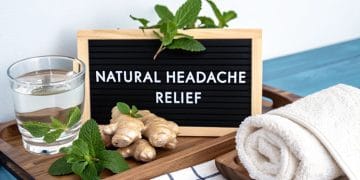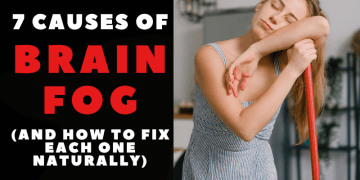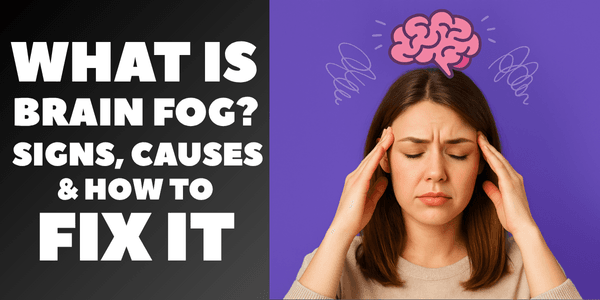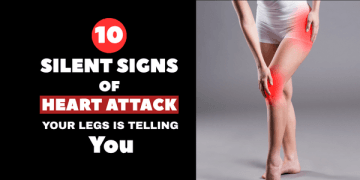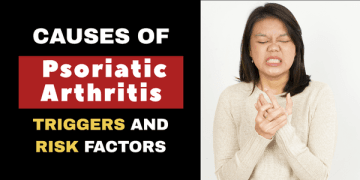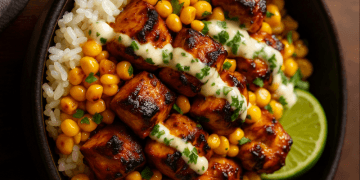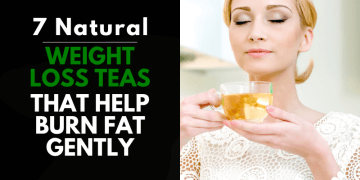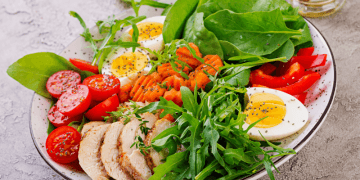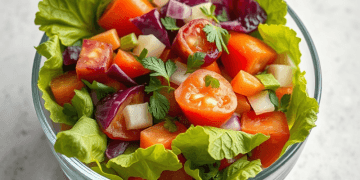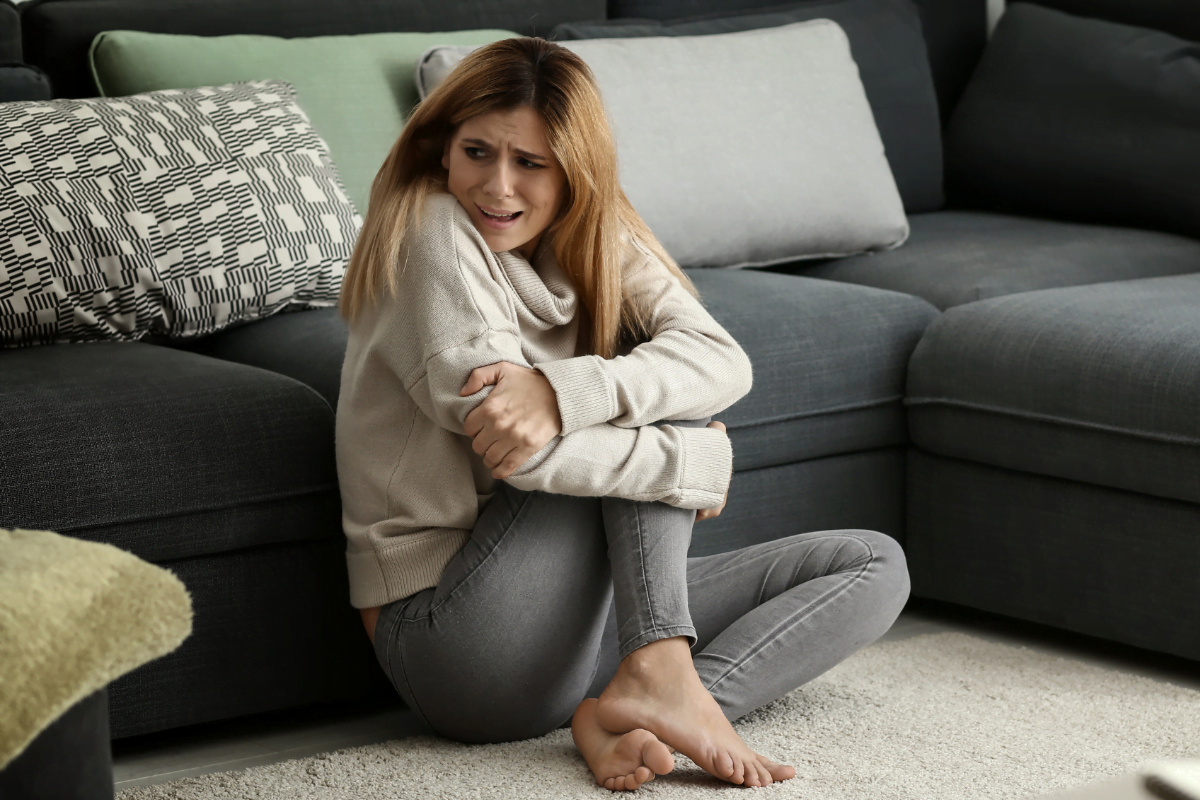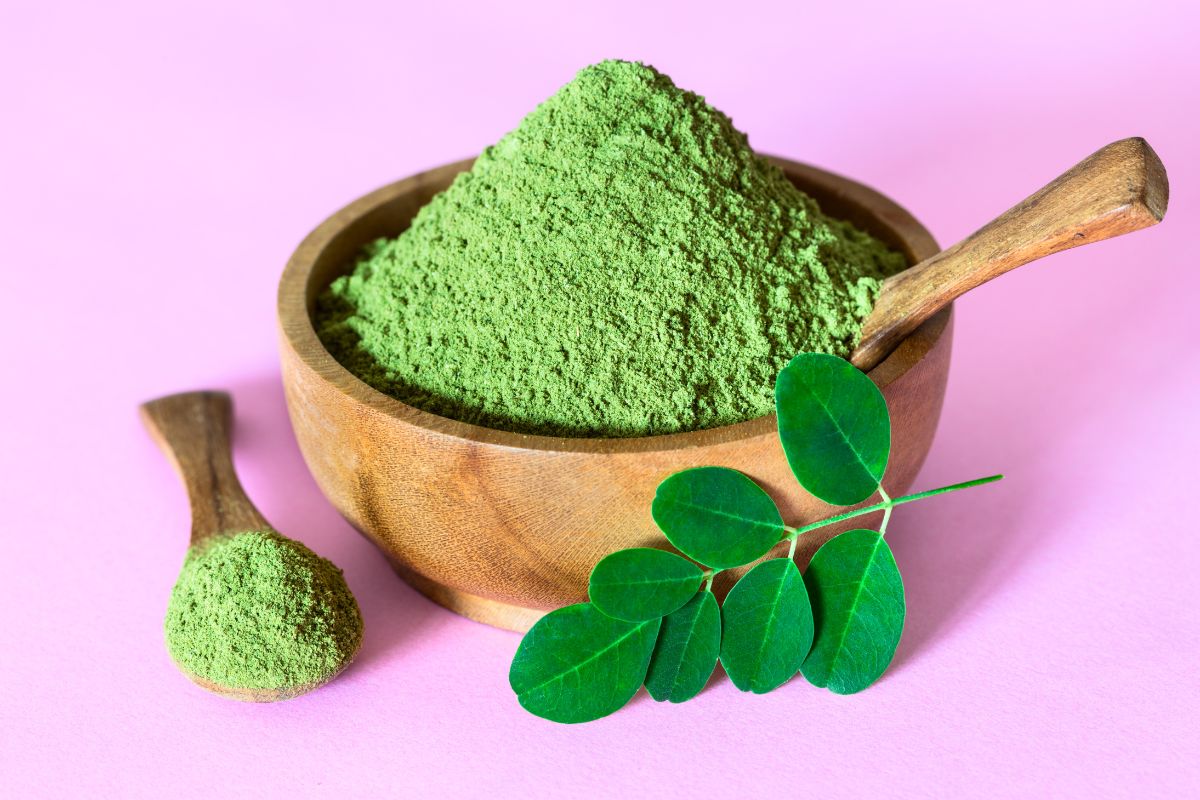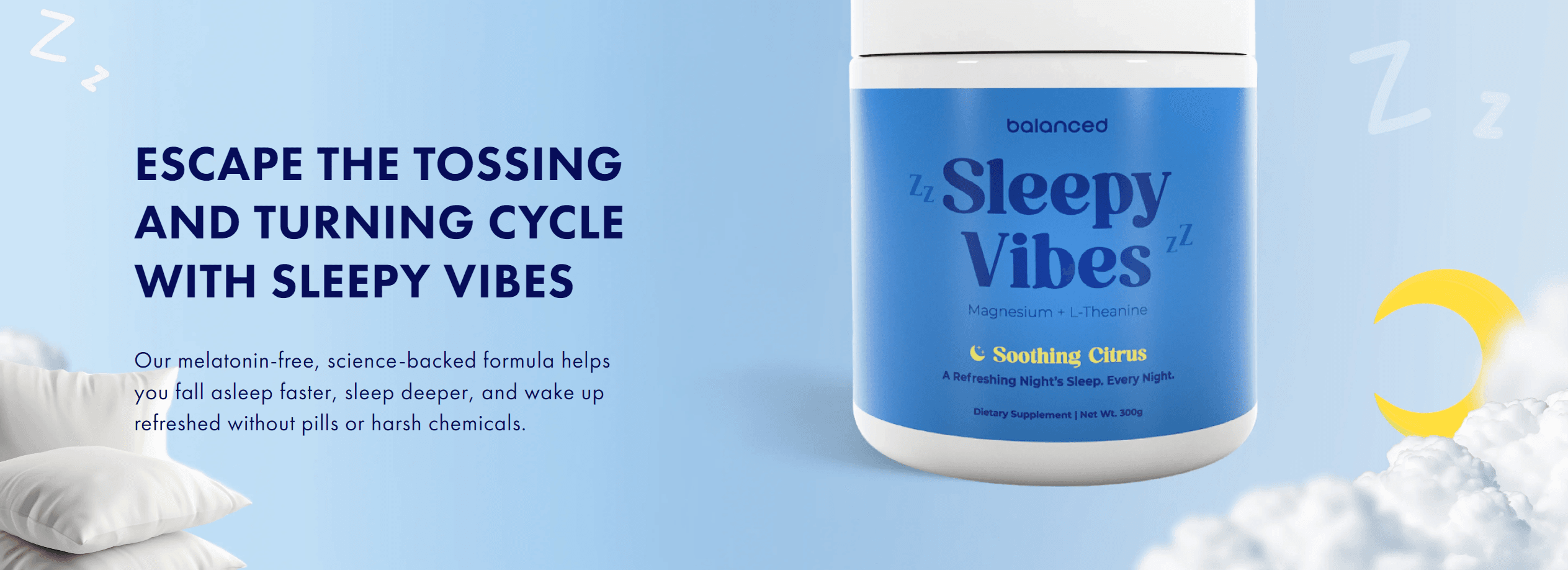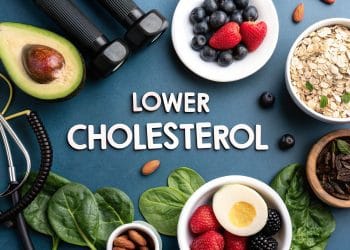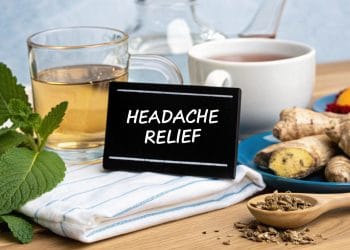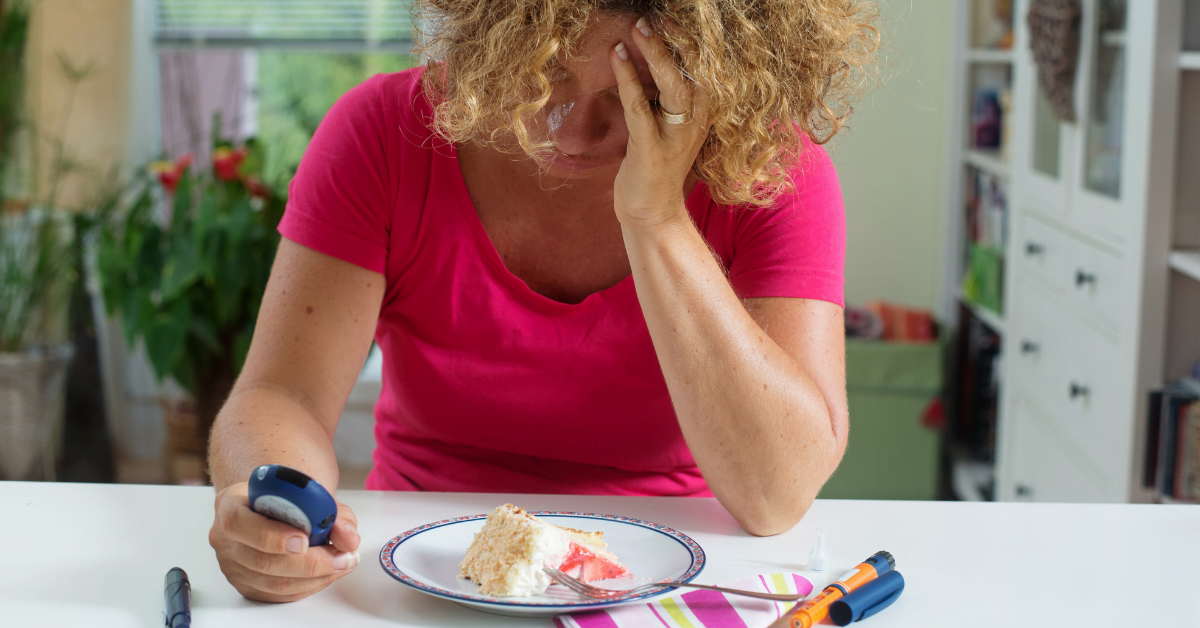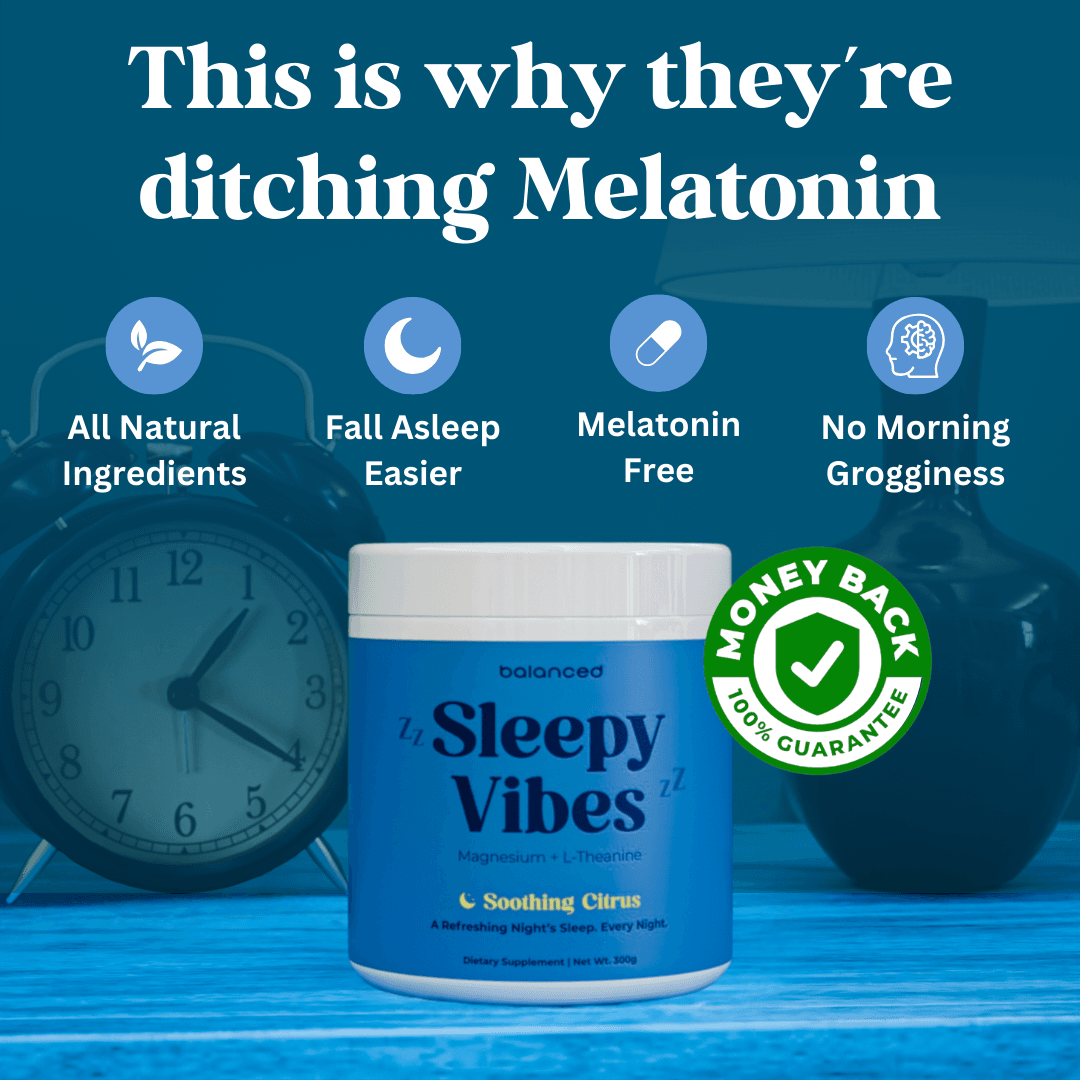Last Updated on July 11, 2025 by Lauretta Iyamu, PharmD
A biking workout plan is your roadmap to getting fitter on two wheels. It mixes different rides to build your fitness. This guide helps you create a plan just for you.
Why You Need a Biking Workout Plan
Just riding your bike is fun. But a plan helps you see real progress. Each ride will have a purpose.
A plan stops you from getting stuck in a rut. It helps you get stronger without getting bored or hurt.
Set Clear and Realistic Goals
First, know your "why." What do you want to achieve? Maybe you want to finish a 50-mile ride.
Or perhaps you want to lose 10 pounds. Your goal guides your whole plan.
Get specific with your goals. "Get faster" is not a clear goal. "Improve my speed by 2 mph in 8 weeks" is much better.
Understand Your Starting Point
Be honest about your current fitness. Everyone starts somewhere. Don't push too hard at the beginning.
Track a few of your normal rides. Note the distance, time, and how you felt. This is your baseline.
This helps you make a plan that is challenging but safe.
Cycling is very popular. In 2020, people bought 145 million bicycles. You can explore the full breakdown of bicycle statistics to see the data.
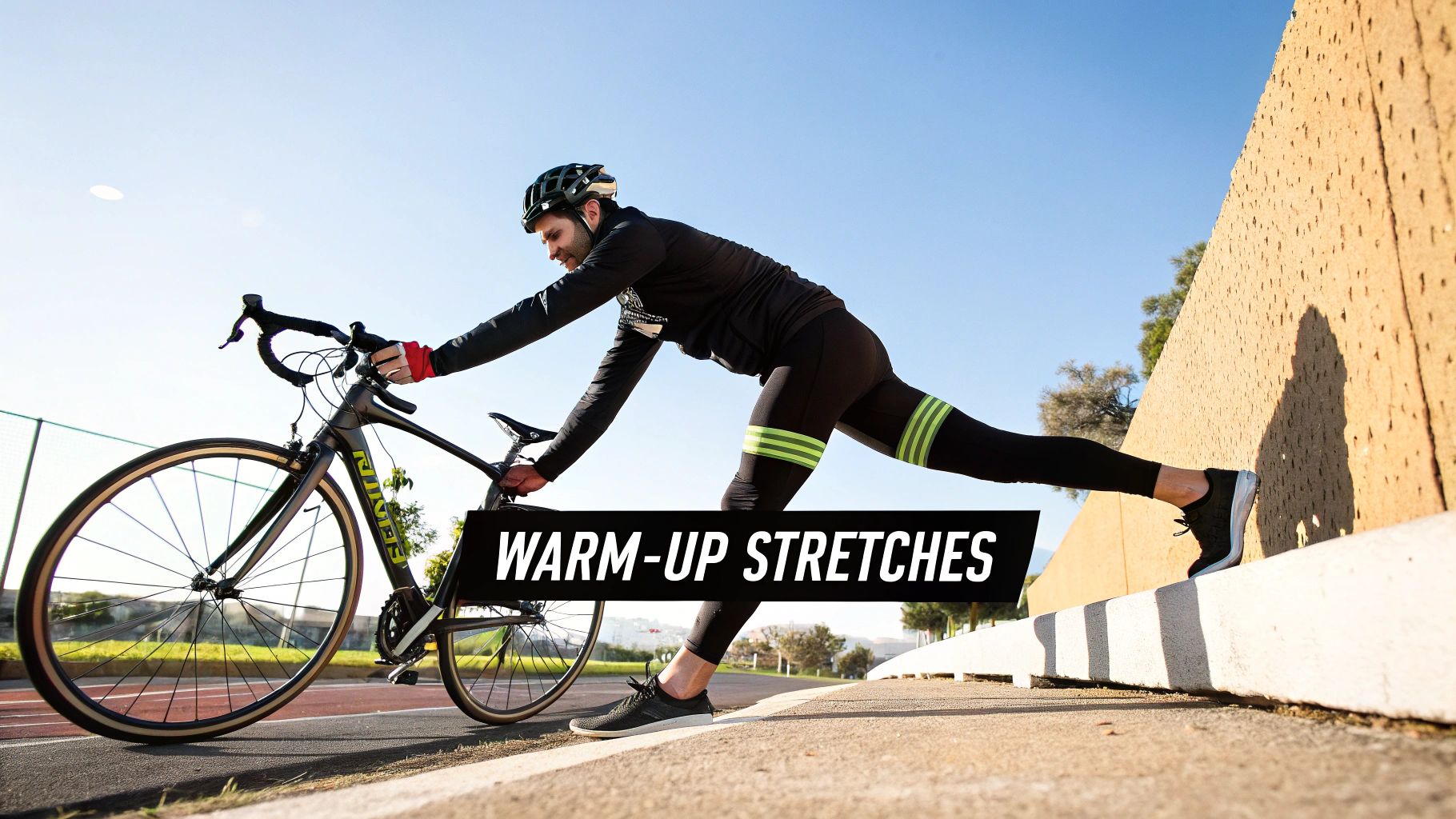
A good plan is about consistency. It helps you become a stronger cyclist over time. Stick with it.
Your weekly schedule needs different types of rides. This makes your plan effective. Here are the workouts you should include.
Core Components of Your Weekly Biking Plan
| Workout Type | Primary Goal | Typical Duration |
|---|---|---|
| Endurance Ride | Build aerobic base, improve fat burning | 1.5 – 4+ hours |
| Interval Training | Increase speed and power (anaerobic threshold) | 30 – 60 minutes |
| Recovery Ride | Promote active recovery, flush out lactic acid | 20 – 45 minutes |
| Hill Repeats | Build muscular strength and climbing power | 45 – 75 minutes |
Using these rides makes you a more complete cyclist. You will build resilience and strength.
How to Structure Your Weekly Cycling Schedule
Smart scheduling helps you see real progress. It's about blending hard rides with rest. This makes cycling a part of your life.
A good structure balances work and recovery. This is key to getting stronger.
Balancing Intensity and Recovery
Don't go hard every day. That leads to burnout. Your body gets stronger when you rest.
Aim for two or three hard rides each week. Do not do them on back-to-back days.
Easy rides or rest days are important. This rhythm of stress and recovery makes you stronger.
A smart week isn't about riding as hard as you can. It's about listening to your body. Rest is crucial for progress.
Be flexible with your schedule. If you feel tired, take it easy. Swap a hard workout for a recovery ride or a day off.
Sample Weekly Schedules
Your perfect week depends on your fitness and time. A beginner's schedule is different from an advanced one. Here are some templates to start with.
-
Beginner (3 Days/Week): The goal is to build a habit.
- Day 1: 30–45 minute steady ride at an easy pace.
- Day 2: Rest.
- Day 3: 45–60 minute ride with a few small hills.
- Day 4: Rest.
- Day 5: 30-minute easy recovery ride.
- Day 6 & 7: Rest.
-
Intermediate (4-5 Days/Week): Add more structure and volume.
- Day 1: 60-minute ride with interval training.
- Day 2: 45-minute recovery ride.
- Day 3: Rest.
- Day 4: 90-minute endurance ride at a steady pace.
- Day 5: Rest or a short 30-minute recovery ride.
- Day 6: 60-minute ride with tempo efforts.
- Day 7: Rest.
Mixing up your training keeps it fun. You can find some great outdoor best friend workouts for a fun alternative when the weather is nice.
Tracking and Adapting Your Plan
A good plan is not set in stone. It should change as you get fitter. This is called progressive overload.
It means you slowly make your workouts harder. This feedback loop helps you adjust your goals.
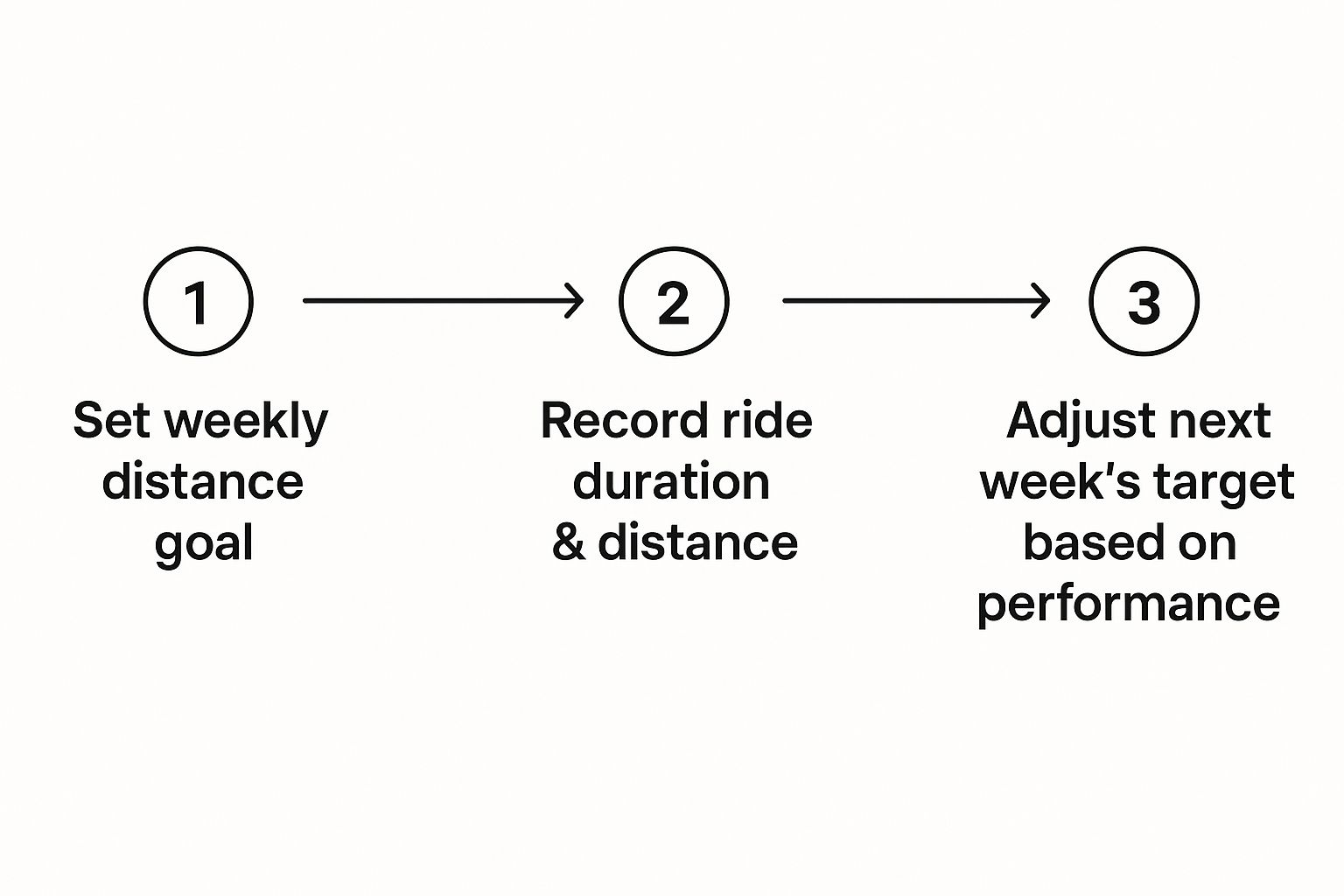
This cycle helps you improve without getting hurt. Listen to your body and adjust your plan each week.
Essential Workouts for Speed and Endurance
To get fast, you need more than just miles. Targeted workouts build speed and endurance. Every ride should have a goal.
These workouts give you that purpose. They push your body to get stronger and more powerful.
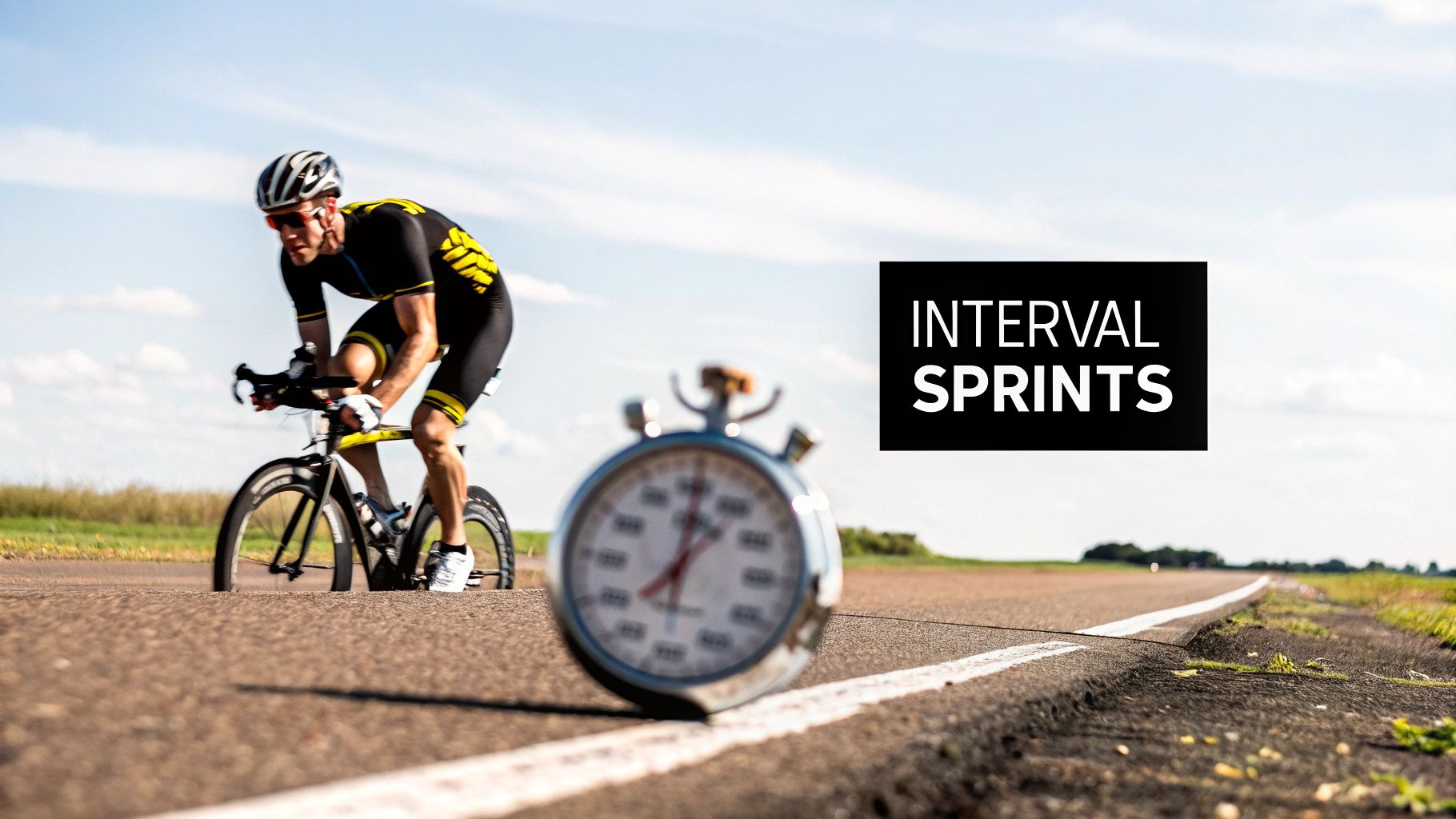
Let's look at the key workouts for your plan. I will explain how to do them. And what they do for your fitness.
Intervals for Top-End Speed
Intervals make you faster. They involve short, hard efforts followed by easy recovery. This boosts your top-end speed.
They teach your body to handle hard work and recover quickly. These workouts are short but very effective.
Here is a simple interval workout:
- Warm-up: Spin easy for 10-15 minutes.
- Main Set: Do 6 to 8 reps of a 2-minute hard effort. Follow each with 2 minutes of easy pedaling.
- Cool-down: Finish with 10 minutes of easy spinning.
Tempo Rides for Sustained Power
Tempo workouts build your sustained power. This helps you ride hard for a long time. The pace is "comfortably hard."
You should feel like you can hold the pace for an hour. This makes your body more efficient at clearing waste.
A tempo ride is a steady, strong effort. It is not a sprint. You should feel the work but stay in control.
Here is a sample tempo session:
- Warm-up: 15 minutes of easy riding.
- Tempo Block: Ride for 20 minutes at your tempo pace.
- Recovery: Spin easy for 5 minutes.
- Second Block: Do another 20-minute tempo block.
- Cool-down: Finish with 15 minutes of easy pedaling.
Long Slow Distance for Your Aerobic Foundation
The Long Slow Distance (LSD) ride is a must. These long, easy rides build your aerobic base. They are very important.
They teach your body to burn fat for fuel. This saves your energy for when you need it most. The goal is time in the saddle.
To help your body with these long rides, some people use endurance-boosting supplements.
It's also good to do exercises off the bike. You can learn 6 ways to burn more calories doing bodyweight exercises that will help your cycling.
Using Indoor Cycling to Stay Consistent
Bad weather or a busy schedule can ruin a plan. Indoor cycling is a great way to stay on track. It is a very useful tool.
Riding inside is a controlled environment. There is no traffic or bad weather. You can do your workouts perfectly.
Maximizing Your Indoor Training
Indoor cycling is better than ever. Smart trainers give you lots of data. They measure your power, cadence, and form.
This feedback helps you track your progress. It's a huge motivator to see yourself improve.
Technology makes indoor cycling fun. You can ride in virtual worlds. You can explore top cycling trends and what's changing the fitness world to see what is new.
Many people find they can push harder indoors. You can focus only on your effort.
Setting Up Your Indoor Space
You don't need a big space for indoor training. A small corner is enough. Make it a place you want to use.
Here are some important tips for your setup:
- Get a Good Fan: You will sweat a lot. A fan keeps you cool.
- Stay Hydrated: Keep a water bottle close by.
- Protect Your Floor: Use a mat under your bike to catch sweat.
The goal is to make it easy to get on the bike. A ready setup helps you stick to your plan.
Integrating Indoor Rides Into Your Plan
Indoor workouts are great for short, hard rides. If it's raining, you can still do your interval session. A smart trainer is perfect for this.
They are also good for recovery rides. A gentle 20-30 minute spin helps your legs recover.
Be careful about overuse injuries. If you feel new pain, don't ignore it. Our guide on how to heal shin splints fast can help with common leg pain.
Indoor cycling adds consistency to your plan. It helps you keep training no matter what.
Your Off-Bike Strategy for Fuel and Recovery
What you do off the bike is very important. Good recovery helps you get stronger for every ride. It is a key part of your plan.
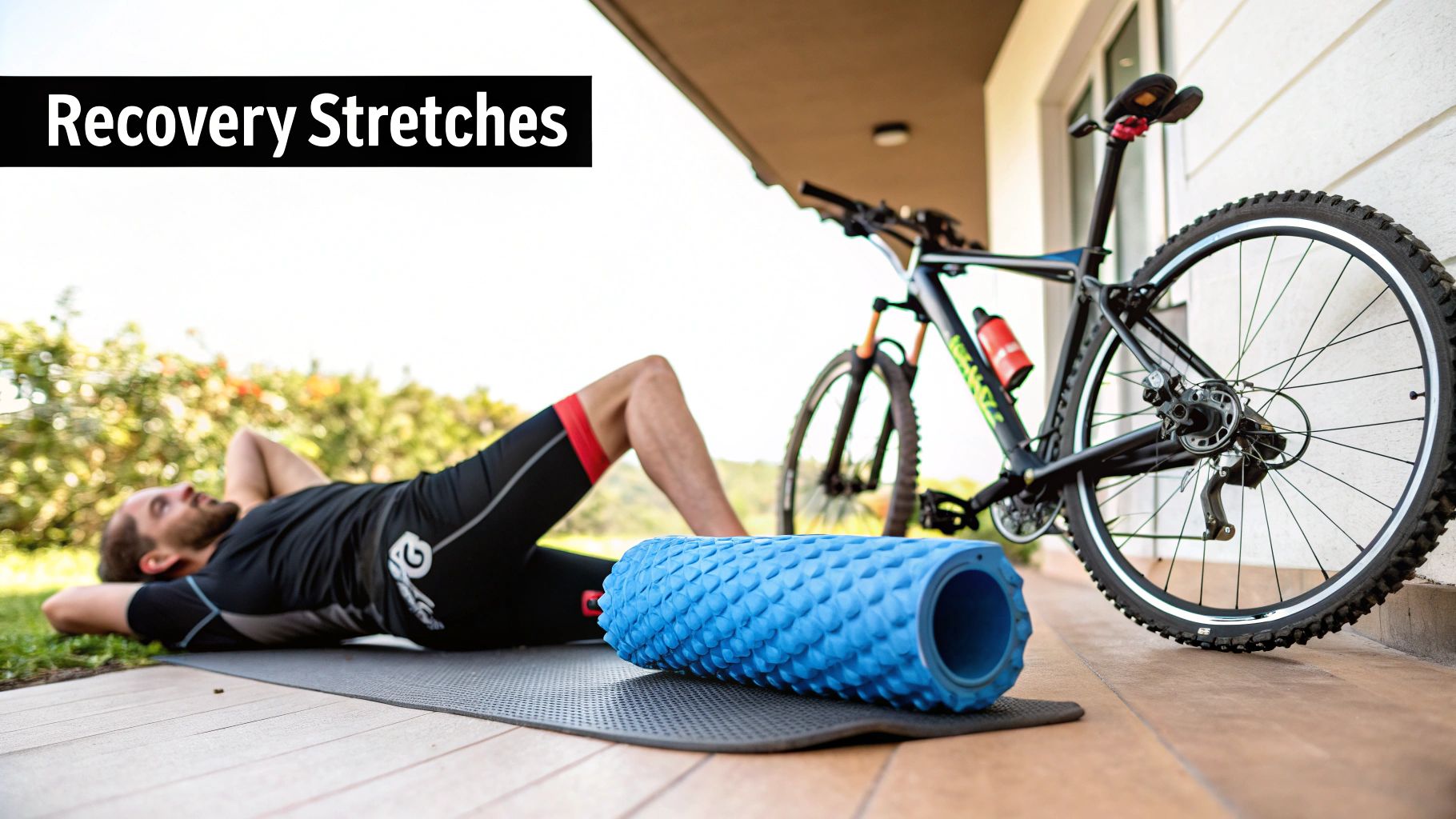
This is about the basics. Eat well, drink water, and get enough rest. Let's look at how to fuel your body.
Pre-Ride Fuel for Sustained Energy
Riding on an empty stomach is a bad idea. Your body needs fuel to work. Eat a meal with carbs 2-3 hours before your ride.
This gives your body time to digest the food. Oatmeal with fruit or a bagel is a good choice.
If you have less time, eat a small snack. A banana 30-60 minutes before you ride works well.
On-Bike Hydration and Fueling
Hydration is your top priority while riding. Drink small sips of water often. Start drinking from the beginning of your ride.
For rides longer than 90 minutes, you need more than water. You need to eat carbs to avoid "bonking."
- Electrolyte Drinks: These replace salts lost in sweat.
- Energy Gels or Chews: These are a quick source of carbs.
- Simple Snacks: Real food like a banana is also great.
Start fueling before you feel hungry or thirsty. If you wait, it's often too late.
Post-Ride Recovery and Muscle Repair
The first hour after your ride is key for recovery. Your muscles are ready to repair and refuel. You need to eat the right things.
Your post-ride meal should have protein and carbs. Protein helps repair muscles. Carbs restock your energy stores.
Chocolate milk is a simple and effective recovery drink. A protein shake or Greek yogurt is also a good choice.
Cycling can be a great exercise for managing health. You can learn about the best exercises for diabetes to see how it helps.
Sleep is also very important. Aim for 7-9 hours of sleep each night. Gentle stretching can also help reduce muscle soreness.
Embracing Sustainable Cycling Habits
Riding a bike is good for the planet. Many cyclists want to do even more. This adds purpose to every ride.
The Greener Side of Cycling
The cycling industry is becoming more eco-friendly. Big events like the Tour de France are reducing waste. This is now a mainstream trend.
Bike brands are using recycled materials. Clothing companies are using organic fabrics. This helps the planet and makes cycling more fulfilling.
Simple Ways to Ride More Sustainably
You can make a difference with small habits. These make your biking workout plan greener. Here are some simple ideas.
- Maintain Your Bike: Taking care of your bike makes parts last longer. This means less waste.
- Choose Eco-Conscious Brands: Support companies that use recycled materials.
- Repair Before You Replace: Learn basic bike repair. This saves money and reduces waste.
Your diet also has an impact. Learning how a plant-based diet can boost athletic performance can help both you and the planet.
Making smart choices about gear adds fulfillment to your rides. It shows respect for the places we ride.
Fueling Yourself and the Planet
What you eat affects the planet. Eating whole foods and plant-based meals can lower your carbon footprint. It also gives you clean energy for your workouts.
For clean energy ideas, check out our guide to natural energy boosters.
Using these habits makes your plan about more than just your health. It helps the planet, too.
Your Biking Workout Plan FAQs
Here are answers to common questions about biking workout plans. This will help you ride with more confidence.
How many days a week should I bike to get fit?
You should aim to ride 3 to 5 times a week. This will help you see noticeable fitness gains.
For beginners, three days is a good start. For experienced cyclists, 4-5 days is standard. Mix in hard rides and recovery days.
Always schedule at least one or two rest days. Rest is when your body gets stronger.
Can I build muscle from cycling alone?
Cycling builds strong leg muscles. It works your quads, hamstrings, and calves. They will become toned and powerful.
But cycling is not a full-body workout. To avoid imbalances, you should also do strength training. Add 1-2 sessions each week for your core and upper body.
Should my plan focus on speed or distance?
A good plan needs both speed and distance. They train different body systems. You need both to be a well-rounded cyclist.
Long, slow rides build your endurance. Short, fast workouts build your power and speed. A smart plan includes both types of rides.
At Healthy Avid, we believe a well-rounded approach to wellness is key. Our blog is your go-to resource for expert advice on natural health, fitness, and nutrition to support your active lifestyle. Explore more tips on HealthyAvid.com.
What is the number one goal for your biking workout plan this season?

